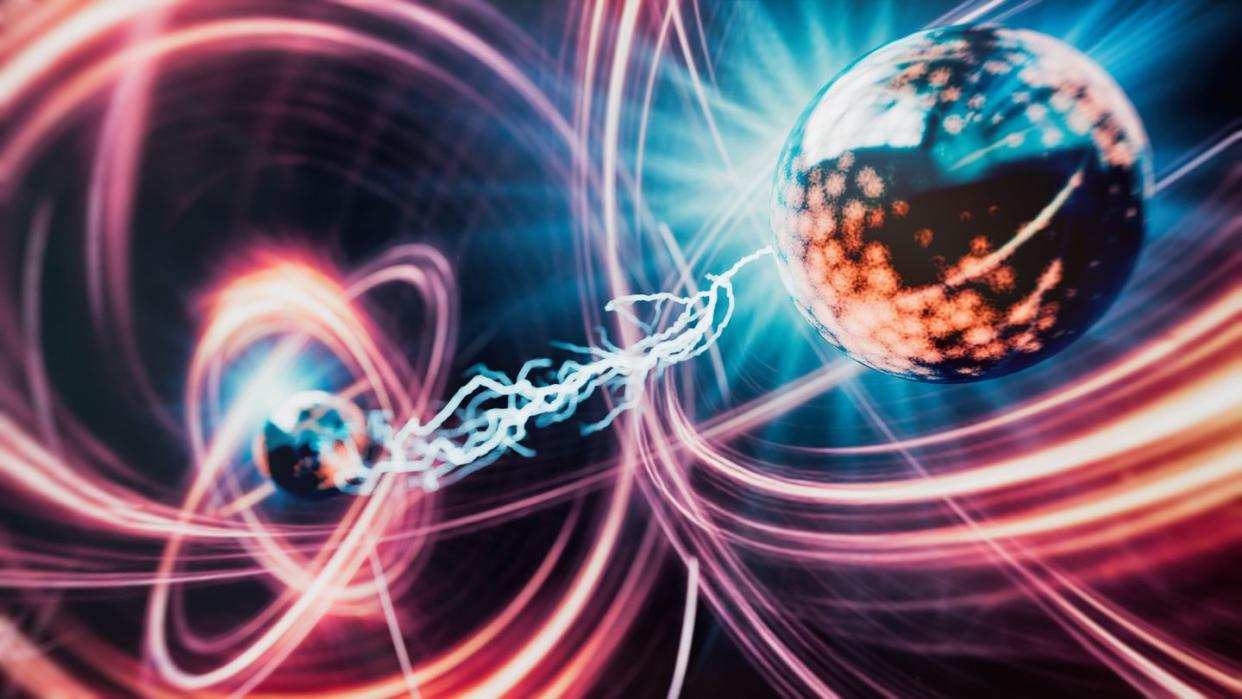Yes, the Most Massive Particle Shows Some ‘Spooky Action At a Distance’

Discovered in 1995, the top quark is the most massive elementary particle that exists, outweighing even the Higgs boson.
Because of its atypical size as compared to other quarks, scientists were curious if it experienced quantum entanglement like other particles.
Now, ATLAS and CMS experiments at CERN’s Large Hadron Collider have both discovered entanglement among top quarks, and this discovery could help unravel more mysteries about this incredible “spooky action at a distance.”
At its bare essentials, every atom is made of two fundamental particles: electrons and quarks. But not all quarks are the same. In fact, the Standard Model of Physics—molded of the course of a half-century—identifies six different kinds, including up, down, strange, charm, bottom, and top quarks. Scientists discovered the top quark only some 30 years ago, and was the last piece of the quark puzzle. That’s because unlike the other quarks, the top quark is big compared to its subatomic brethren.
Top quarks weigh in at an impressive 175.6 gigaelectron volts (GeV)—about the same mass of the atomic nucleus of gold—but only exist for 15 to 24 seconds before decaying into free particles. Because of the top quark’s (relatively) massive bulk, it took decades after the discovery of the bottom quark for the U.S.-based Fermilabs to create an accelerator capable of detecting the elusive particle.
In the 30 years since, investigating the top quark has opened up new worlds of particle physics, and the discovery of the Higgs boson in 2012 revealed the two particles’ close association. Now, scientists at CERN have been busy investigating the top quark’s quantum properties, and discovered that top quarks experience quantum entanglement like other elementary particles even in spite of their mass.
In the fall of 2023, the Toroidal LHC Apparatus (ATLAS) Experiment discovered entanglement between two top quarks, and earlier this week, another CERN detector—the Compact Muon Solenoid (CMS)—also detected quantum entanglement between top quarks, according to CERN. Specifically, the team discovered entanglement between the unstable top quark and its antimatter partner across distances “farther than what can be covered by information transferred at the speed of light,” according to a press release. In the famous words of Albert Einstein, that is what's known as “spooky action at distance.”
To help illustrate this strange effect of quantum mechanics, Regina Demina from the University of Rochester—who was part of the original team that discovered the top quark in 1995, co-lead a team that built the tracking device for finding the Higgs boson, and now led the CMS team at the Large Hadron Collider at CERN—describes the idea in colorful terms via a Facebook video:
“In a faraway land, there was a king. His name was Top, and he got the news that his country is being invaded by his enemy. So, he sends messengers to tell his constituents to defend, but then he has a bad dreams, and he changes his decision. And again, he sends messengers to tell his decision. He keeps flip-flopping like this and no one knows what his decision will be at the next moment. But there is one village that actually happens to know his decision, every time, perfectly. The king of this village is Anti-Top. These are the particles that we’re dealing with: They know each other’s state of mind at any given time.”
This kind of entanglement has been a hot topic when it comes to exploring quantum information and quantum computers, but top quarks can only be made in colliders. So, while they won’t be used in these types of next-gen machines, the discovery of their entanglement could answer questions about this the nature of this “spooky action from a distance”—questions like whether that entanglement continues once a particle decays, and what eventually breaks that entanglement.
It’s been a long journey of discovery when it comes to the top quark, and there are likely many more mysteries yet to uncover.
You Might Also Like


